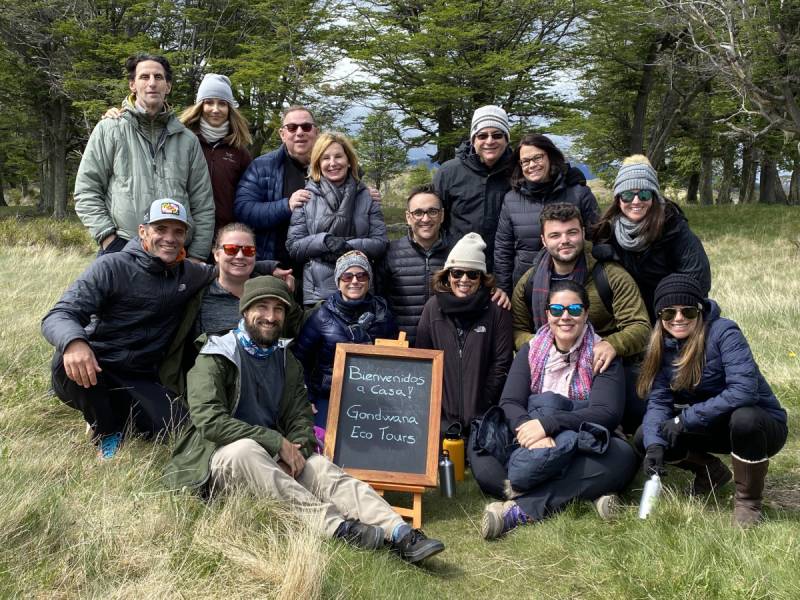The Chagga Tribe of The Tanzania Highlands
Download Travel Details >PRIVATE & SMALL GROUP TOURS TO THE WORLD'S BEST DESTINATIONS
Join Us For A Safari In Tanzania

Who Are The Chagga People?
The Chagga Tribe is an ethnic group of Bantu speakers who live in the Tanzania highlands, on the fertile southern slope of Mount Kilimanjaro. They are the third largest ethnic group in the country, with six big subgroups divided into numerous clans. The Chagga are known as the richest of all Tanzanian tribes. They are primarily farmers, growing bananas, maize, and corn, and are successful in the cultivation of these crops because the weather in this region is favorable for agriculture. Some Chagga tribe members serve as porters or guides for tourists climbing Mount Kilimanjaro, which earns them more money than farming – especially during peak tourist season.
5 Fun Facts About Chagga Traditions
The Chagga tribe was originally divided into small autonomous chiefdoms belonging to different clans ruled by chiefs, who were known as “Mangi.” This system was deeply rooted in Chagga traditions but fell out of use once Tanzania gained its independence in 1961.
- The Chagga produce a variety of arts and crafts, including spears, ornaments, bells, hoes, and baskets.
- The Chagga tribe uses stories and songs to record their history and educate younger generations.
- The Chagga have adopted both Christianity and Islam, although Chagga traditions include the god “Ruwa,” which means “sun.”
- The Chagga practice folk medicine and have incorporated rituals into their culture that mark life-cycle events and help tribe members celebrate and mark milestones.
- The Ngasi is a rite-of-passage ceremony marking a Chagga boy’s transition into adulthood.
Not many African tribes live in the Tanzania highlands, where they can experience the fall of snow in the mountains! This unique tribe is hard-working and hardy, although much of the economic advantage they’ve experienced can be attributed to their early contact with European missionaries and adoption of the Christian religion.
Agriculture and The Chagga Tribe
For centuries, Chagga traditions have centered on agriculture. Every member of the Chagga tribe has a large home garden, where they grow crops such as coffee, bananas, oranges, lemons, avocados, sugar cane, flowers, vegetables, and herbs for personal use. However, tribe members also work together to produce cash crops for export, including coffee and bananas. The Chagga have a reputation for being shrewd businesspeople and often have positions of influence in Tanzanian society. In addition to their farming activities, the Chagga keep livestock and poultry for meat, milk, and manure.
Chagga Culture and Heritage
Chagga traditions include rituals, clothing and adornments, music, traditions, crafts, and, of course, traditional food and culinary practices. Let's briefly explore these areas to get a better understanding of the Chagga people and their lives in the Tanzania highlands.
The Chagga Language
The main language spoken by the Chagga tribe is Kichagga, which can differ between different regions and clans. However, almost all Chagga people also speak Swahili, the national language of Tanzania. Swahili is taught in primary schools and is used in the workplace. English is taught in secondary schools and universities. Historically, the Chagga people had more contact with English-speaking settlers and missionaries than other Tanzanian tribes, so they are often fluent in English as well as Kichagga and Swahili.
Chagga Food
The staple food of the Chagga tribe is bananas. Bananas are also used to produce beer. The tribe’s location in the Tanzania highlands allows them to grow a variety of food crops, including bananas, millet, maize, beans, and cassava. They also keep cattle for meat and milk, as well as goats and sheep. When a Chagga woman is pregnant, Chagga traditions call for her to eat milk, sweet potatoes, fat, yams, and butter. She is also fed a special dish of bananas and beans, called kitawa. Bananas are also combined with meat to create a soup dish called mtori, which is popular in other parts of Tanzania as well.
Chagga Education
Before Tanzania’s independence, Chagga children were educated by Christian missionaries. This education was paid for through the sale of cash crops like coffee. Chagga children who were educated often achieved a better social standing in their area than those who were not. However, after Tanzania gained its independence, all tribes (including the Chagga) were encouraged to attend at least primary school. Children who passed their primary lessons were able to attend secondary school for four years. Today, there are also trade and business schools available to those students who are seeking practical skills. Even older members of the Chagga tribe are involved in adult literacy programs, and most Chagga can read and write Swahili and English.
Cultural Heritage and Chagga Traditions
Dance is a large part of the Chagga’s cultural heritage. Like the Maasai, the Chagga tribe incorporates dancing and singing into almost every celebration. The Chagga has different types of dances depending on the occasion. For example, rosi – the war dance – is performed by men only. The irirui dance is performed by dancers of both genders on various occasions. Chaga traditions also incorporate oral storytelling as a method to record their history. The Chagga have many legends, songs, and proverbs to guide youth and convey their wisdom.
Traditional Chagga Work
For most of their history, the daily work of Chagga tribe members centered on the farm. This labor is divided into men’s work and women’s work. In general, men fed livestock, built and maintained canals, prepared the fields, slaughtered animals, and built houses. Women gather firewood and water, cook, clean, and oversee trading at the market. Although many families still maintain their farming lifestyle, it is becoming necessary for men to seek employment in urban areas to support their families. Alternatively, many men work as porters and guides for visitors attempting to summit Mount Kilimanjaro.
Getting to Know The Chagga Tribe through Ecotourism
If you’re curious to learn more about the Chagga tribe, you can visit a Chagga village! When you travel with a small tour operator like Gondwana Ecotours, cultural exchange is always an option. This type of tourism is beneficial for the Chagga people, as it generates income and is often re-invested in the community – in homes, gardens, education, and health care.
Machame is one of the best places in the Tanzania highlands to meet Chagga people. This farming community is representative of the Chagga lifestyle; community members have large home gardens and grow tropical fruits, vegetables, and medicinal plants. A guide can take you to Machame from Moshi or Arusha, and along the way, you can learn about Chagga history. Once at Machame, you can visit Chagga families, learn about their lives, and taste traditional Chagga food.
On Route to Machame With Gondwana Ecotours
You don’t have to climb Mount Kilimanjaro when you visit the Tanzania highlands! Instead, you can visit the Chagga tribe to learn more about their traditional way of life in Tanzania. While they are not as well-known as the Maasai tribe, the Chagga’s unique lifestyle on the slopes of Kilimanjaro offers visitors a glimpse into a life that has one foot in the past – as well as one foot in the present. Contact Gondwana Ecotours to learn more about traveling to Tanzania and start planning an incredible adventure today.

